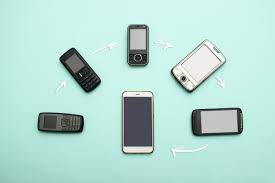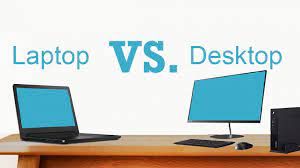Defining the smartphones and its impact on communication
Smartphones and its impact come challenges such as maintaining a healthy work-life balance, preserving personal relationships.

In the blink of an eye, it seems, we went from bulky landline smartphones and its impact with tethered us to a single spot to sleek, powerful devices that fit in the palm of our hands and connect us to the world in ways we never thought possible.
The smartphone has revolutionized the way we communicate, work, and live. In this blog post, we'll take a deep dive into the evolution of smartphones and explore their profound impact on communication.
The Early Days: Mobile Phones
To truly appreciate the marvel of today's smartphones, it's essential to look back at their humble beginnings. The first mobile phones were far from "smart." In fact, they were quite the opposite. These devices were enormous, heavy, and had limited functionality. They were primarily used for voice calls and were often dubbed "brick phones" due to their size and weight.
The first commercially available mobile phone, the Motorola DynaTAC 8000X, hit the market in 1983. It was a far cry from the sleek, pocket-sized devices we're accustomed to today. This phone weighed nearly 2.2 pounds, had a talk time of around 30 minutes, and a hefty price tag of $3,995 (equivalent to over $10,000 in today's money).
The Evolution Begins: The Rise of Feature Phones
As technology advanced, so did mobile phones. The late '90s and early 2000s saw the emergence of "feature phones." These devices introduced additional features beyond basic calling, such as text messaging, calculators, and rudimentary games. Nokia's famous "Snake" game became a staple on many of these phones.
One key feature of feature phones was the ability to send and receive text messages, a function that dramatically expanded communication possibilities. SMS (Short Message Service) became a popular way to stay in touch, allowing users to send written messages even when they couldn't make a call.
Feature phones were more compact and affordable than their predecessors, making them accessible to a broader range of consumers. Nokia, Motorola, Sony Ericsson, and other manufacturers competed fiercely in this market.
The Smartphone Revolution
The true revolution in mobile communication began with the advent of smartphones. These devices combined the functionality of phones, personal digital assistants (PDAs), and multimedia players into one sleek package. The year 2007 marked a pivotal moment in smartphone history with the introduction of the iPhone by Apple and the launch of Android by Google.
The iPhone, with its intuitive touchscreen interface and the App Store, changed the game entirely. It wasn't just a phone; it was a pocket-sized computer that could do almost anything. Android devices soon followed suit, offering a range of options to suit various preferences and budgets.
Key Milestones in Smartphone Evolution:
- Touchscreens: The introduction of capacitive touchscreens made smartphones more user-friendly. Users could swipe, pinch, and tap their way through apps and content, eliminating the need for physical keyboards.
- Apps: The App Store and Google Play Store transformed smartphones into customizable tools. Users could download apps for almost anything, from social media to productivity, entertainment, and more.
- Cameras: Built-in cameras improved dramatically in quality, making smartphones the primary tool for capturing everyday moments and even professional photography.
- Connectivity: The widespread adoption of 3G, 4G, and now 5G networks allowed for faster data transfer, enabling high-quality video calls, streaming, and more.
- Integration: Smartphones seamlessly integrated with other devices and services, such as smart home technology, wearables, and cloud storage.
Impact on Communication
The evolution of smartphones has had a profound impact on communication in several ways:
- Instant Communication: Smartphones brought us instant messaging apps like WhatsApp, Facebook Messenger, and iMessage. These apps allowed for real-time text, voice, and video communication, breaking down geographical barriers and enabling communication across time zones.
- Social Media: Social media platforms like Facebook, Twitter, Instagram, and Snapchat became accessible through smartphones. These platforms revolutionized the way we share our lives, connect with friends and family, and stay informed about current events.
- Email on the Go: With smartphones, checking and responding to emails became a mobile activity. Professionals could stay connected to their work even when away from the office, leading to greater productivity but also blurring the line between work and personal life.
- Video Calls: FaceTime, Skype, Zoom, and other video calling apps made it possible to have face-to-face conversations with people anywhere in the world. This was especially crucial during the COVID-19 pandemic when physical distancing became necessary.
- Global Reach: Smartphones connected people from all corners of the globe. Language translation apps and international calling options made it easier to communicate with individuals from different cultures and backgrounds.
- Information Access: The ability to access the internet from anywhere allowed users to look up information instantly. This not only facilitated communication but also enhanced our knowledge and problem-solving capabilities.
- Multimedia Messaging: Smartphones allowed for the easy sharing of photos, videos, and voice messages, making communication richer and more expressive.
- GPS and Location Sharing: GPS technology in smartphones transformed navigation and location-based services. It became possible to share one's real-time location with friends and family, enhancing safety and convenience.
- Emergency Services: Smartphones have made it easier to contact emergency services quickly. Features like "Emergency SOS" and medical ID information can be lifesaving in critical situations.
- Accessibility: Smartphones have opened up new communication possibilities for individuals with disabilities. Features like voice assistants, screen readers, and speech-to-text have made smartphones more inclusive.
The evolution of smartphones has been nothing short of remarkable. From the heavy, expensive, and limited mobile phones of the '80s to the sleek, powerful, and versatile devices of today, smartphones have transformed the way we communicate and live our lives. They have become an integral part of our daily routines, offering us instant access to information, entertainment, and each other.
As we look to the future, it's clear that smartphones will continue to play a central role in communication and connectivity. The ongoing development of 5G technology, the proliferation of wearable devices, and the rise of augmented reality (AR) and virtual reality (VR) applications promise to take smartphone communication to new heights.
The smartphone has not only changed the way we communicate but has also changed society itself. It has altered how we work, how we socialize, how we access information, and how we navigate the world.
The impact of the smartphone on communication is a testament to the incredible power of technological innovation to reshape our lives and bring people closer together, no matter where they are in the world.
What's Your Reaction?















